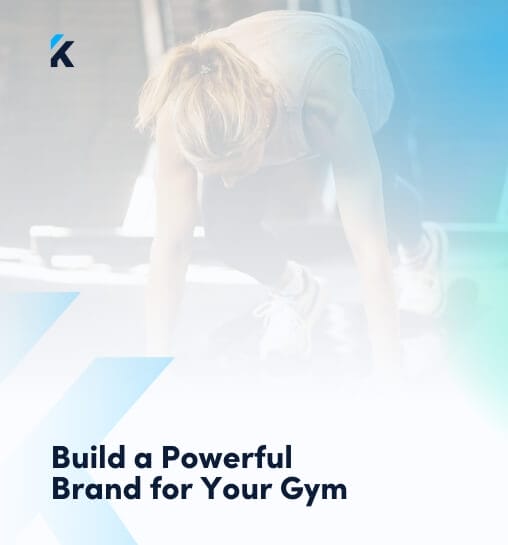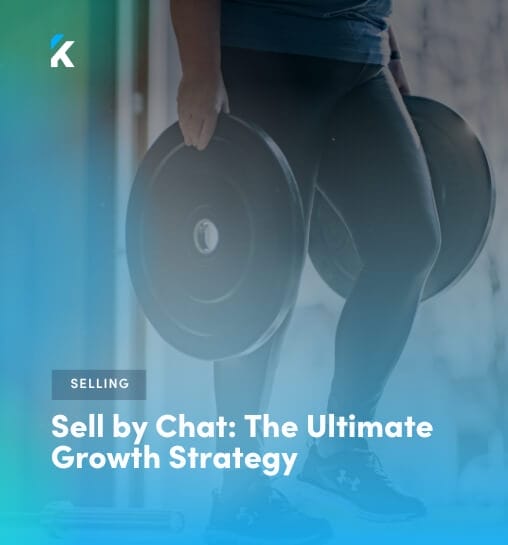Their answers might surprise you…
What’s up Gym World?
Each year, Two-Brain Business collaborates with major gym management software companies like Kilo, Wodify, PushPress, and TeamUp to collect data from thousands of gym owners.
The result is the State of the Industry (SOI) report—a fancy guide packed with graphs and visuals that gives us insight into what the best coaching gyms are doing.
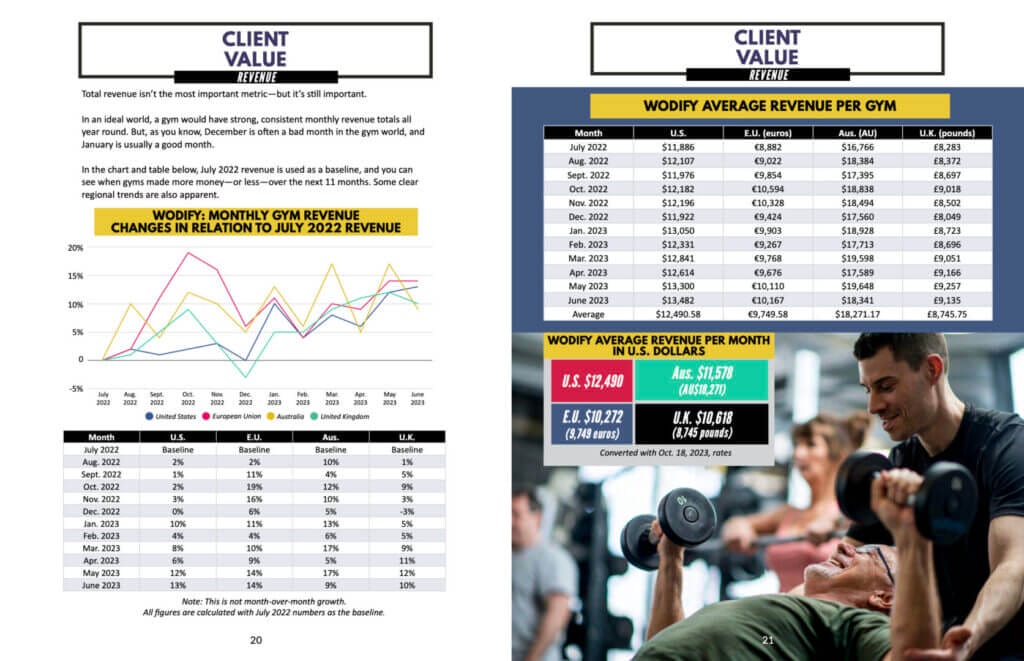
Two-Brain gives it away so you can make smarter, data-driven decisions for your gym. Our hope is that it makes you enough money to pay for mentorship.
This year’s report dropped on Monday. Here’s what we learned:
1. The average gym owner makes $3,967/mo
💡 This number includes personal expenses that are run through the business, like insurance, phone plans, and the owner’s car.
While there’s a slight uptick from last year’s $3,787, it’s still too low for the level of risk and the amount of hours the average gym owner works. For context, the median household income in the US is $74,580.
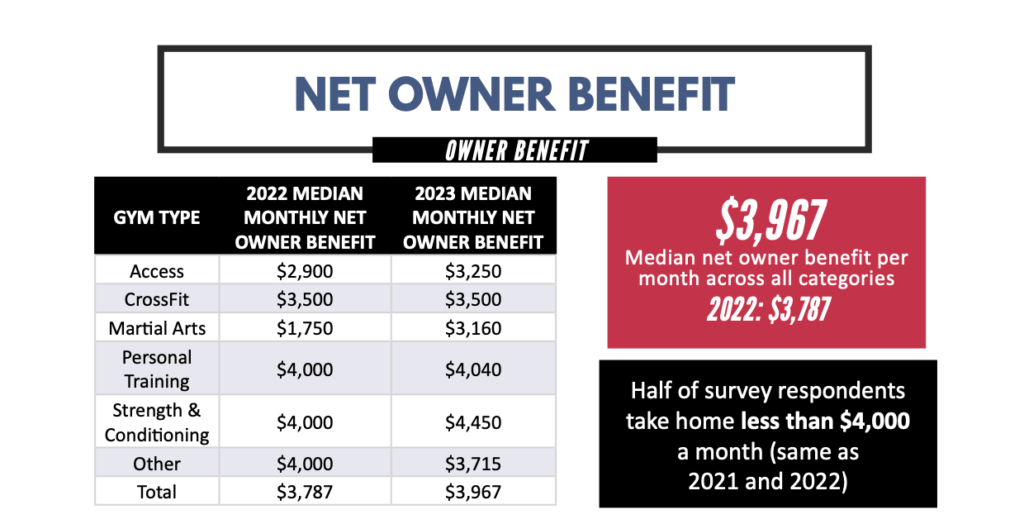
2. The average gym has 159 members
💡 This number is up from 154 members in 2022.
If the median gym owner has over 150 members but makes less than $4,000 a month, it means the median gym is running a broken model.
The owner of a coaching gym with 150 clients should be bringing home around $100k a year. This data point tells me that most gym owners are underpricing their service.
3. The average class size is 6.9 members
The median gym charges $165/mo for large group training—which usually means a class of 8-12+ people, but actual attendance suggests they’re delivering small group training (4-7 people) or even personal training (1-2 people). So they’re selling large group training but delivering small group training.
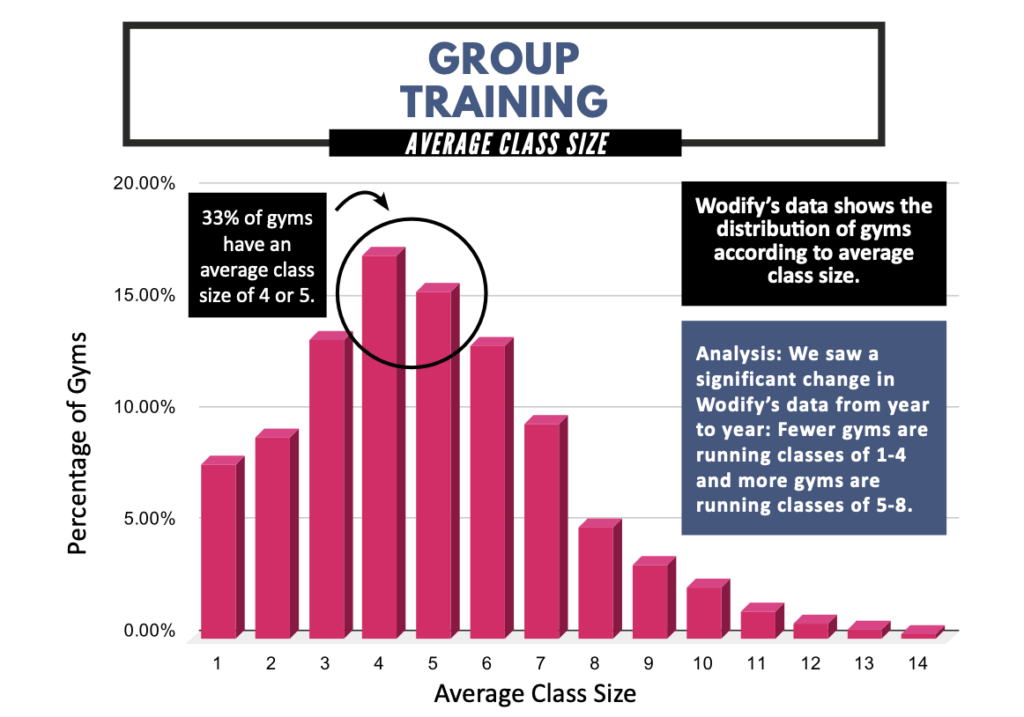
Here’s what gym owners can do:
- Charge a premium. Small group training is a premium service and deserves a premium price. We have interviewed plenty of people on Gym World that charge between $300 to $720 a month for this service.
- Cut underperforming classes. This cuts expenses and improves the attendance of your remaining classes, with little effect on your revenue. If you want to set your schedule, pg. 27 is a good place to start.
Either or both of these changes can make your gym more profitable and give you more time to work on growing your business.
💡 For many gym owners, class attendance follows Pareto’s Principle. If you’re one of them, 80% of your profit comes from 20% of your classes. What would happen if you only ran classes at peak times? - How much would it reduce your overhead? - Would this make running your gym easier? - Could you work fewer hours?
4. Nutrition programs only make up 4.3% of revenue
Nutrition programs are time-consuming, can be complex and costly, and in the end, they don’t add much to your bottom line.
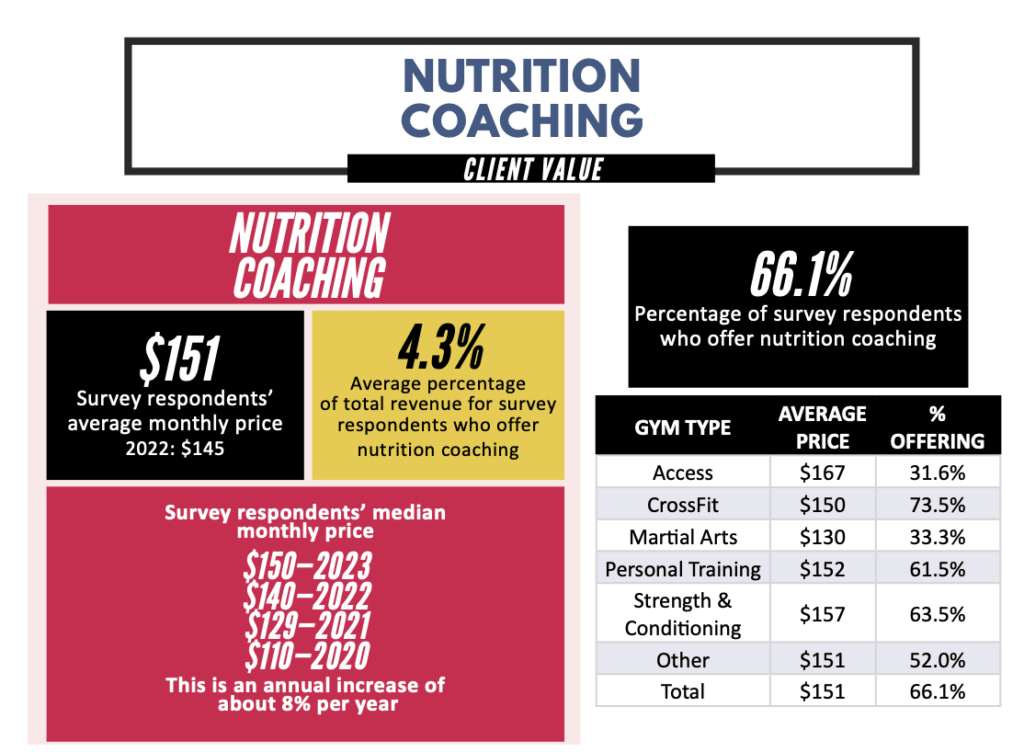
Though nutrition intervention is important, you’re better off by:
- Partnering with a nutrition company,
- Running quarterly nutrition challenges, or
- Having an “accountability” add-on service
And using the extra time focus on your core service.
5. The average length of engagement (LEG) is 7.8 months
Length of Engagement (LEG) is how long the average client stays in your gym.
In his book Never Lose a Customer Again, Joey Coleman emphasizes the value of retention: a 5% increase can boost profits by 25 to 100%. Two-Brain did a survey in 2018 and found that the average gym owner would make an additional $45,000 a year if they increased their length of engagement by two months.
It is six to seven times more expensive to acquire a new customer than it is to keep a current customer.
A short LEG is an indicator that a gym is not delivering on their marketing promises. If you’re in this boat, here’s an exercise from Two-Brain that you can do:
💡 1. Motivational interviewing — ask questions to know exactly what results your clients want 2. Sell solutions, not workouts — know exactly where they’re starting and work backward from their desired result to map the entire process 3. Review client progress — keep them on track and book a Goal Review Session within 90 days
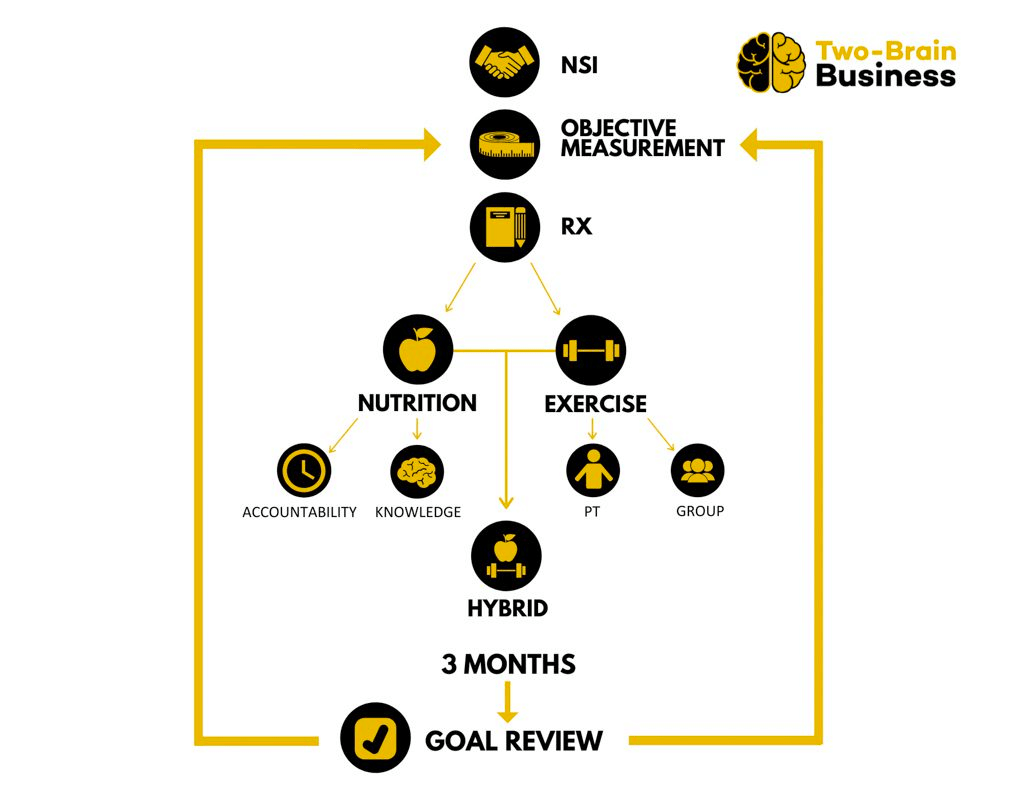
Improving your client journey is one of the highest ROI things for gym owners; that’s why gurus will often say to ‘just improve your service.’ The reality is, it takes 3-6 months to see a difference, and gym owners need something that generates cash faster.
6. Almost 90% of gyms rent their space
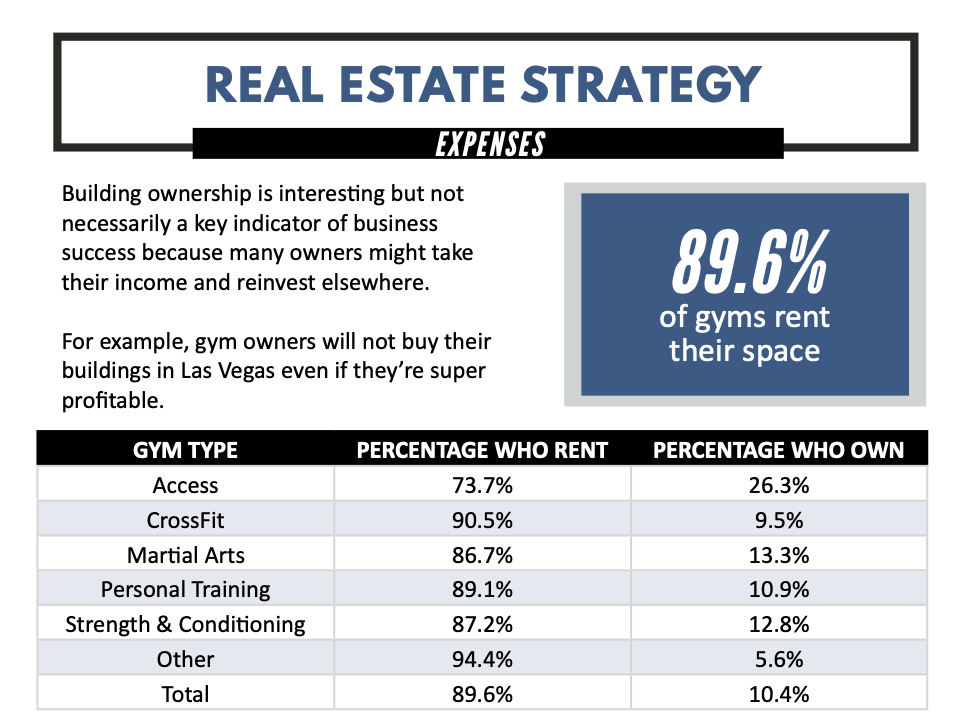
Gym World’s seen it repeatedly: owners often make more from owning their building than running their gym.
If you want a faster way to build wealth:
- Create a 5-year plan towards ownership — this guide lays it out for you
- Start learning about SBA loans if you’re in the US
TL;DR: you don’t have to be a broke gym owner
The State of the Industry has all the insights you need to make better business decisions.
If you haven’t already, download a copy here: https://twobrainbusiness.com/data/
And spread the good word to your gym friends.
For an in-depth industry analysis, check out our interview with Chris Cooper on Gym World. It’s a must-watch, must-listen for every gym owner:
Cheers,
j



